If you are experiencing trouble with your network connection and have it configured to DHCP, figuring out your IP address can be quite a task. Using a Static IP Address helps avert IP address conflicts between networked devices and enables their easy management. This article will show you how to assign a static IP address on a Windows 11/10 computer.
Assign a static IP address in Windows 11/10
In most cases, the respective router automatically configures the IP addresses for PCs or computers to Dynamic Host Configuration Protocol (DHCP). This is useful as the devices connect to your network instantly. You save the trouble of manually configuring the IP address for each new device yourself. However, there’s one shortfall associated with the process – The device’s IP address can change occasionally.
Setting a static IP may be required if you regularly share files, share a printer, or when configuring Port forwarding. We will see four methods to do it:
- Via Control Panel
- Via Windows Settings
- Using PowerShell
- Using Command Prompt.
1] Setting a static IP address via Control Panel
Right-click the network (or Wi-Fi) icon visible on Windows Taskbar.
From the list of 2 options displayed, select the latter one – Open Network and Internet settings.

Go to Wi-Fi settings and scroll down a bit to locate ‘Related Settings’ section. When found click on the ‘Change adapter options’ link visible there.
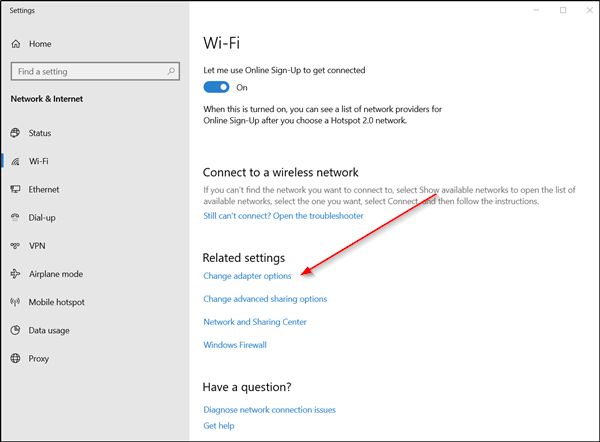
Instantly, a separate window will open and direct you to the Network Connections section of the Control Panel.
Right-click the network connection you need to set a static IP address for and select ‘Properties‘ option.
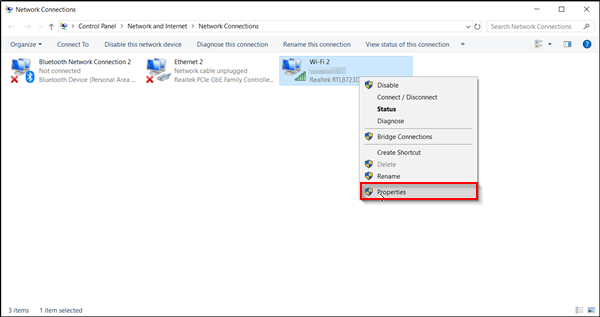
After that, select Internet Protocol Version 4 (TCP/IPv4) seen under ‘Networking’ tab and hit the ‘Properties’ button.
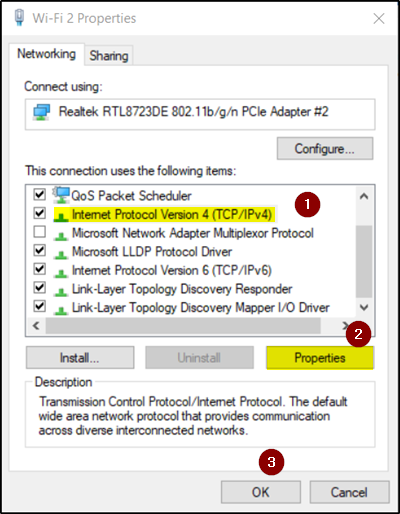
Switch the selector to ‘Use the following IP address’.
Now, make the entry for the following fields, corresponding to your network setup.
- IP address (Find it using ipconfig /all command)
- Subnet Mask (On a home network, it is 255.255.255.0)
- Default Gateway (It is your router’s IP address.)
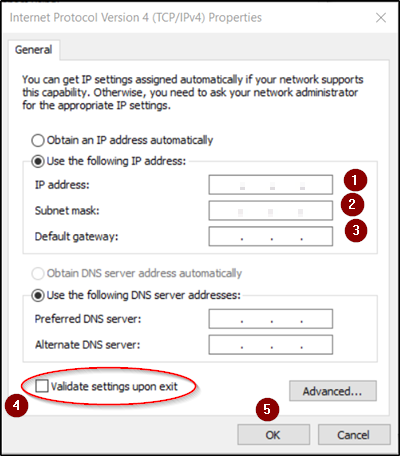
In the end, do not forget to check the ‘Validate settings upon exit’ option. This option helps Windows quickly check your new IP address and other relevant information to ensure that it works.
If all looks good, press the ‘OK’ button and close out of the network adapter’s properties window.
2] Assign Static IP Address via Settings
Windows 11
Right-click the Windows button on the Taskbar and select Settings from the list of options. Alternatively, you can press Win+I in combination to go to the settings directly.
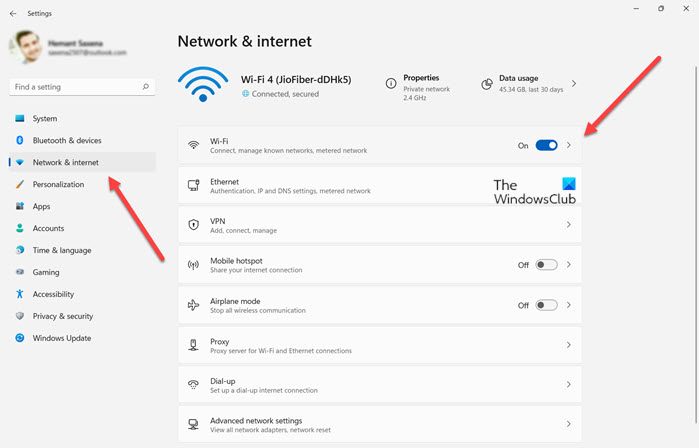
Select Network & Internet from the side panel on the left and expand the Wi-Fi menu.
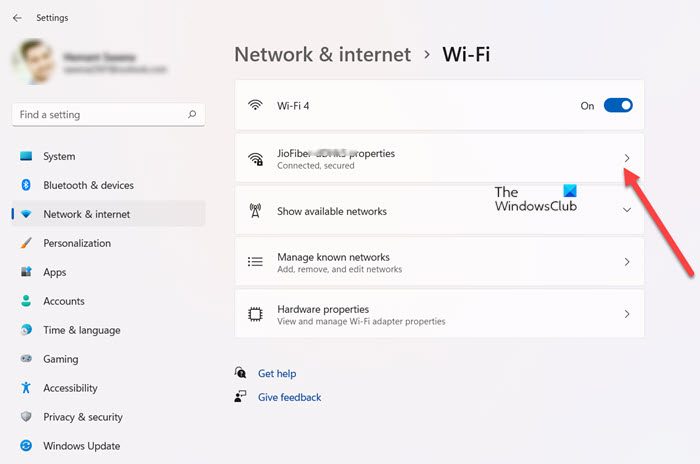
Select your current connection, i.e., the network to which you are connected.
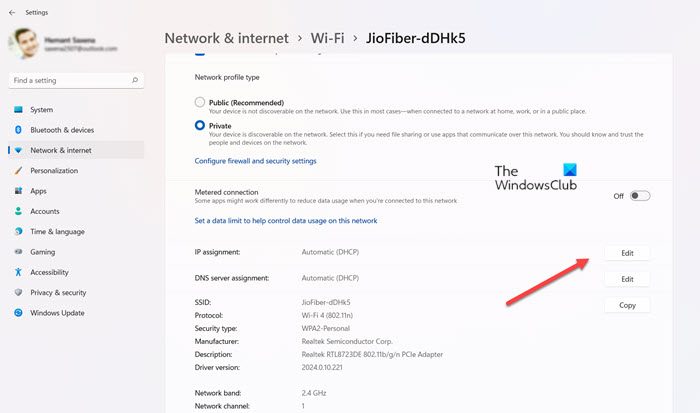
When directed to a new screen, scroll down to IP assignment entry, hit the Edit button next to it.
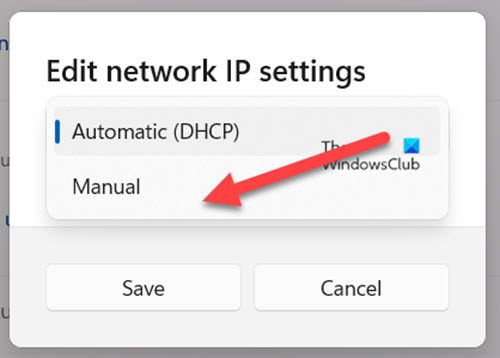
Now, when the ‘IP settings’ window pops up, hit the drop-down arrow and select the ‘Manual’ option.
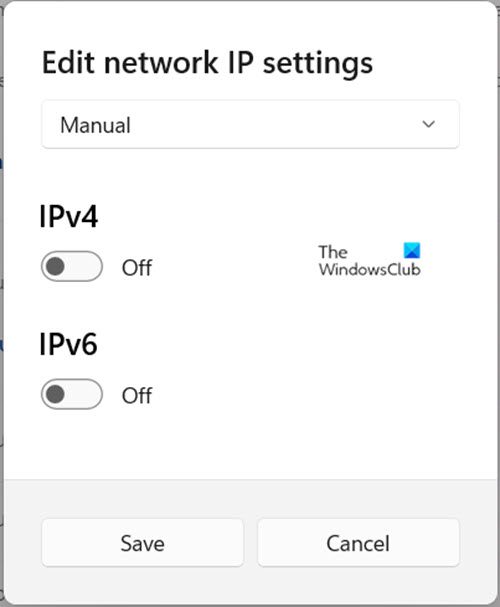
Slide the toggle next to IPv4 to the On position.
Now, set the static IP address. Also, set the Subnet prefix length (subnet mask). If your subnet mask is 255.255.255.0, then the subnet prefix length in bits is 24.
Once done, configure the Default Gateway address, Preferred DNS address and Save the changes.
Windows 10
Click Settings icon and choose ‘Network & Internet’ tab.
Select Wi-Fi > Current connection, i.e., the network to which you are connected.
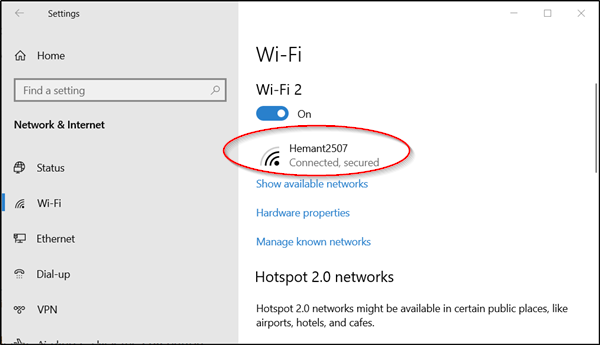
Scroll down to IP settings section and hit the Edit button.
Then, when the ‘IP settings’ window pops up, hit the drop-down arrow and select ‘Manual‘ option.
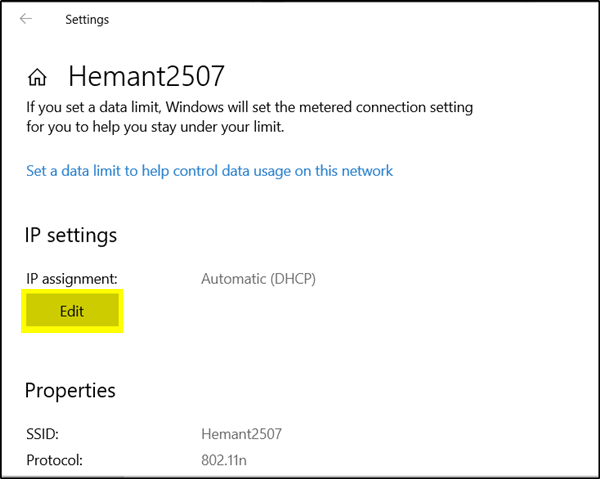
Turn on the IPv4 toggle switch.
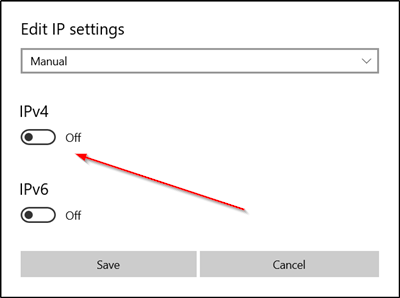
Now, set the static IP address. Also, set the Subnet prefix length (subnet mask). If your subnet mask is 255.255.255.0, then the subnet prefix length in bits is 24.
Once done, configure the Default Gateway address, Preferred DNS address and Save the changes.
Read: Types and Classes of IP addresses explained.
3] Assigning Static IP Address via PowerShell
Open Powershell as Administrator and enter the following command to view your current network configuration-
Get-NetIPConfiguration
Following this, note down the following information:
- InterfaceIndex
- IPv4Address
- IPv4DefaultGateway
- DNSServer.
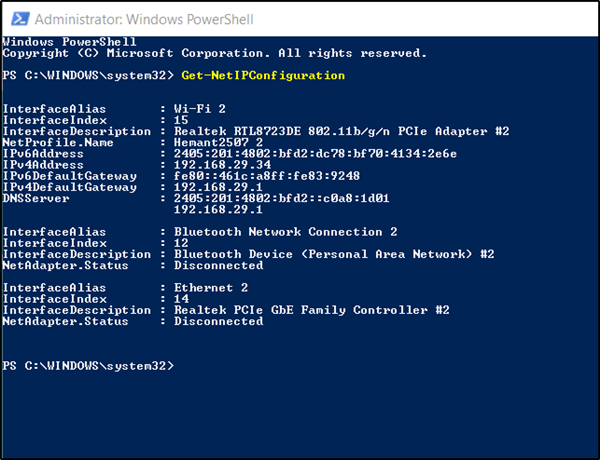
After that, enter the following command to set a static IP address and press Enter.
New-NetIPAddress -InterfaceIndex 15 -IPAddress 192.168.29.34 -PrefixLength 24 -DefaultGateway 192.168.29.1.
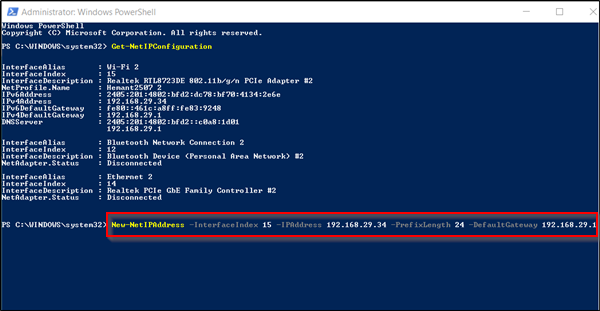
Now, change DefaultGateway with the default gateway address of your network. Make sure to change the InterfaceIndex number with the one corresponding to your adapter and IPAddress with the IP address you want to assign to your device.
When done, Type the following command to assign a DNS server address and press Enter.
Set-DnsClientServerAddress -InterfaceIndex 4 -ServerAddresses 10.1.2.1
Save the changes and exit.
4] Assign a Static IP Address using Command Prompt
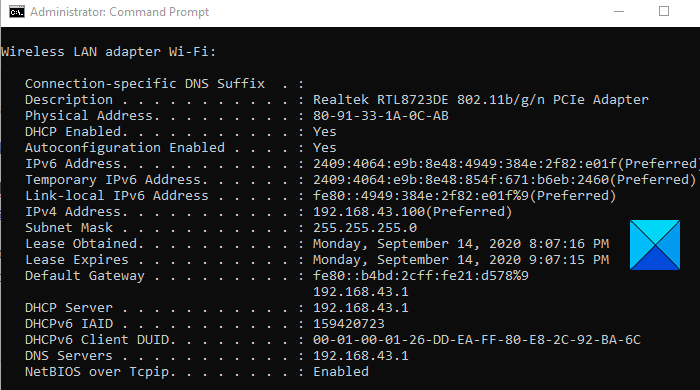
To set a static IP address in Windows 10 using a command prompt, follow the below suggestions:
Right-click on the Start button and select Run to open the Run dialog box.
Type cmd in the text box and press Ctrl+Shift+Enter keyboard shortcut to run the Command Prompt with administrative privileges.
In the Command Prompt window, type in the following text code:
ipconfig /all
When you press the enter key, it will show all the current network configuration.
Under the network adapter, write down the following information:
- IPv4 Address
- Subnet Mask
- Default Gateway
- DNS Server.
After that, execute the following command to set a new static IP address:
netsh interface ip set address name="Ethernet0" static ip_address subnet_mask default_gateway
In the above command-line, make sure to change Ethernet0 with the name of your current network adapter.
Also, replace the “ip_address subnet_mask default_gateway” the correct values for your case.
Again, type the following command and hit enter to set a DNS server address:
netsh interface ip set dns name="Ethernet0" static dns_server
In the above command-line, replace Ethernet0 with the name of your current network adapter. Also, change dns_server with the correct values of your DNS Servers.
After running the above commands, type exit and press Enter to close the Command Prompt.
I hope this helps.
Read: No Internet after setting Static IP on Windows
What is Static IP connection?
A static IP as the name suggests is an IP address that remains fixed and never changes. So, once your device is assigned a static IP address, its number typically stays the same until the device is decommissioned or your network architecture changes. Static IP addresses are mainly used by servers or other important equipment.
What is Static IP used for?
A static IP address offers convenient remote access which makes it easier to work remotely using a Virtual Private Network (VPN) or other remote access programs. Besides, it enables more reliable communication [use Voice over Internet Protocol (VoIP) for teleconferencing or other voice and video communications].